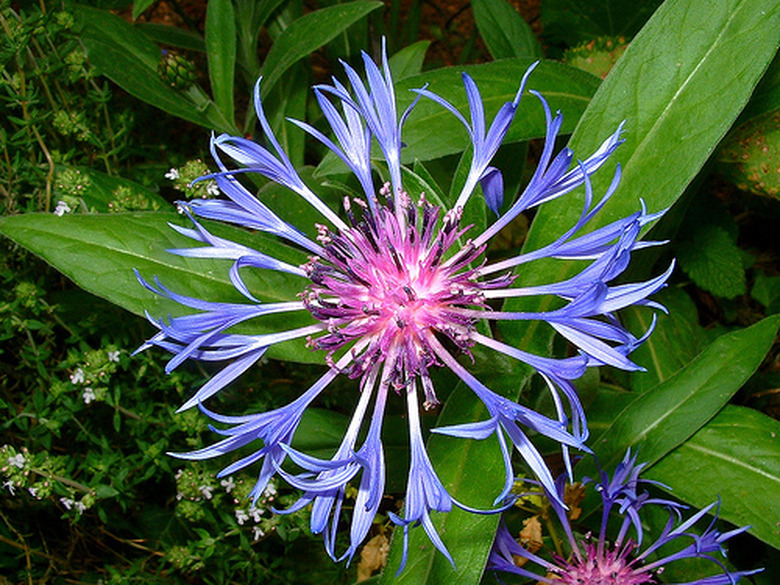How To Care For Cornflower
Cornflower, also known as Bachelor's Buttons, is a perennial or annual flowering plant native to Europe and the Americas. It is typically grown as an annual in the United States, although some perennial varieties can be grown in warm climates. Cornflower plants produce bluish-lavender flowers in the late spring and early summer, which are characterized by their fringed, thistle-like appearance. They are popular in cut flower gardens, borders and edging, and wildflower gardens. If allowed to set seed, cornflower will return year after year with only minimal care and maintenance.
Step 1
Sow cornflower seeds in early spring after all threat of frost has passed. Choose an area of the garden which receives full to partial sun and has average, well-drained soil. Space seeds 2 to 3 inches apart and plant about ½ inch deep. Cornflower seeds need complete darkness for germination to occur.
- Cornflower, also known as Bachelor's Buttons, is a perennial or annual flowering plant native to Europe and the Americas.
- They are popular in cut flower gardens, borders and edging, and wildflower gardens.
Step 2
Water cornflower plants once per week only on weeks which do not receive rainfall. Allow the soil to dry out slightly between waterings. Do not allow the soil to become too dry, or the plants may flop over. However, cornflower is drought tolerant and will easily spring back from under watering.
Step 3
Feed cornflowers once per month during the spring and summer months using a balanced flower fertilizer. Refer to the manufacturer's instructions for proper dosage, and apply half the recommended dose. Cornflower can be invasive if the soil is too fertile, so avoid over-fertilizing.
- Water cornflower plants once per week only on weeks which do not receive rainfall.
- Cornflower can be invasive if the soil is too fertile, so avoid over-fertilizing.
Step 4
Remove spent flowers as they fade to encourage the growth of new flowers, prolong the blooming period of the cornflower plants and decrease the number of self-sown seedlings. Pinch off the dead flowers as close to the stem as possible using your fingers and discard.
Step 5
Check the foliage of cornflower regularly for signs of aphids and powdery mildew. Remove aphids manually with a hard spray of water. Powdery mildew is identified by a white coating on the leaves and wilted, brown foliage. Remove infected plants and burn them to prevent the disease from spreading.
Tip
Keep the soil evenly moist after planting until the cornflower seeds germinate, then begin watering infrequently. Over watering established plants can promote the growth of powdery mildew. A second sowing of cornflower seeds in the early summer will prolong the short blooming season by providing a second blooming in late summer or early fall.
References
- Cornflower Production and Consumer Care
- Book: Annuals for every purpose: choose the right plants for your conditions, your garden, and your taste; Larry Hodgson; 2002
- Book: Taylor's 50 Best Perennials for Sun: Easy Plants for More Beautiful Gardens; Frances Tenenbaum; 1999
